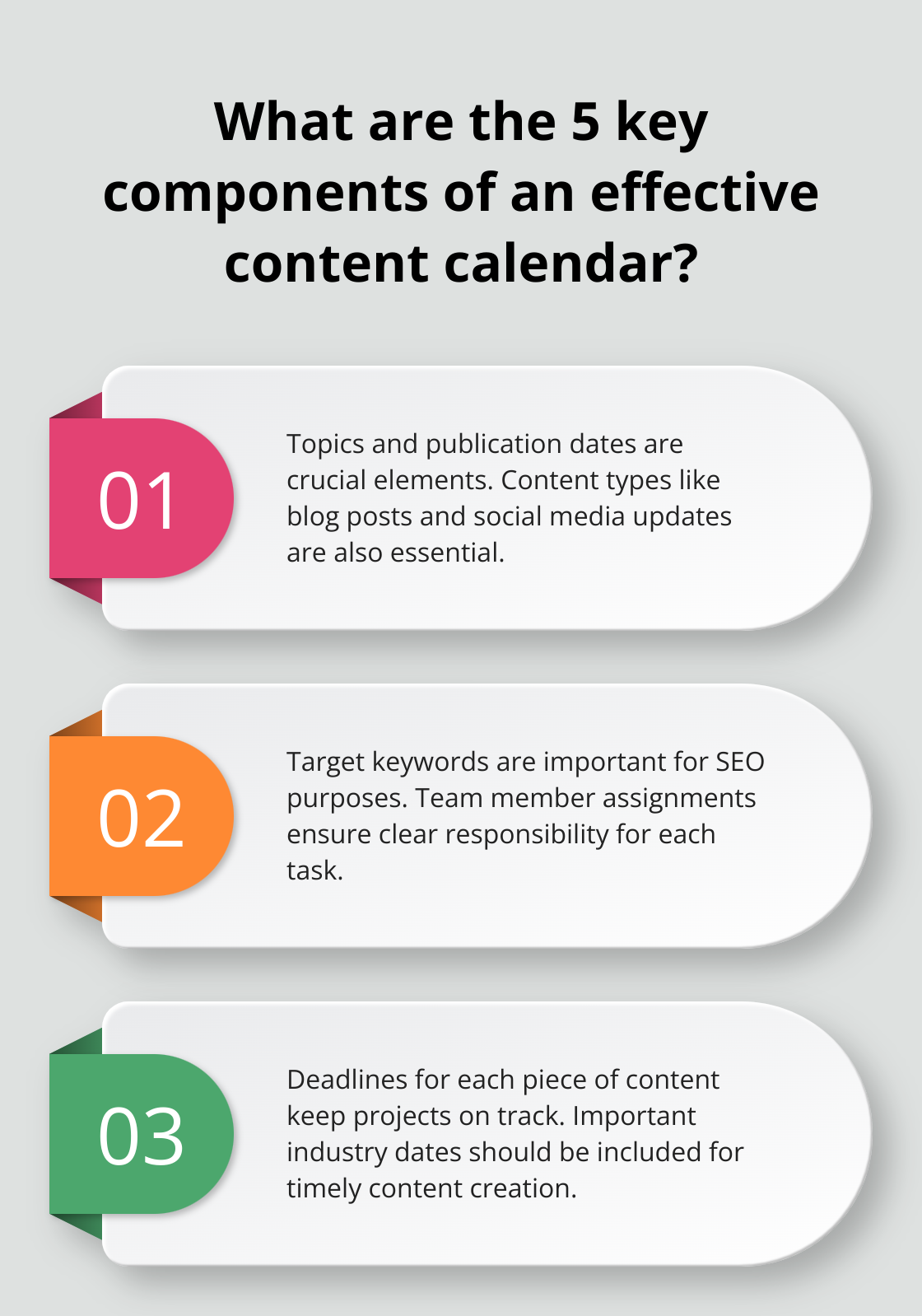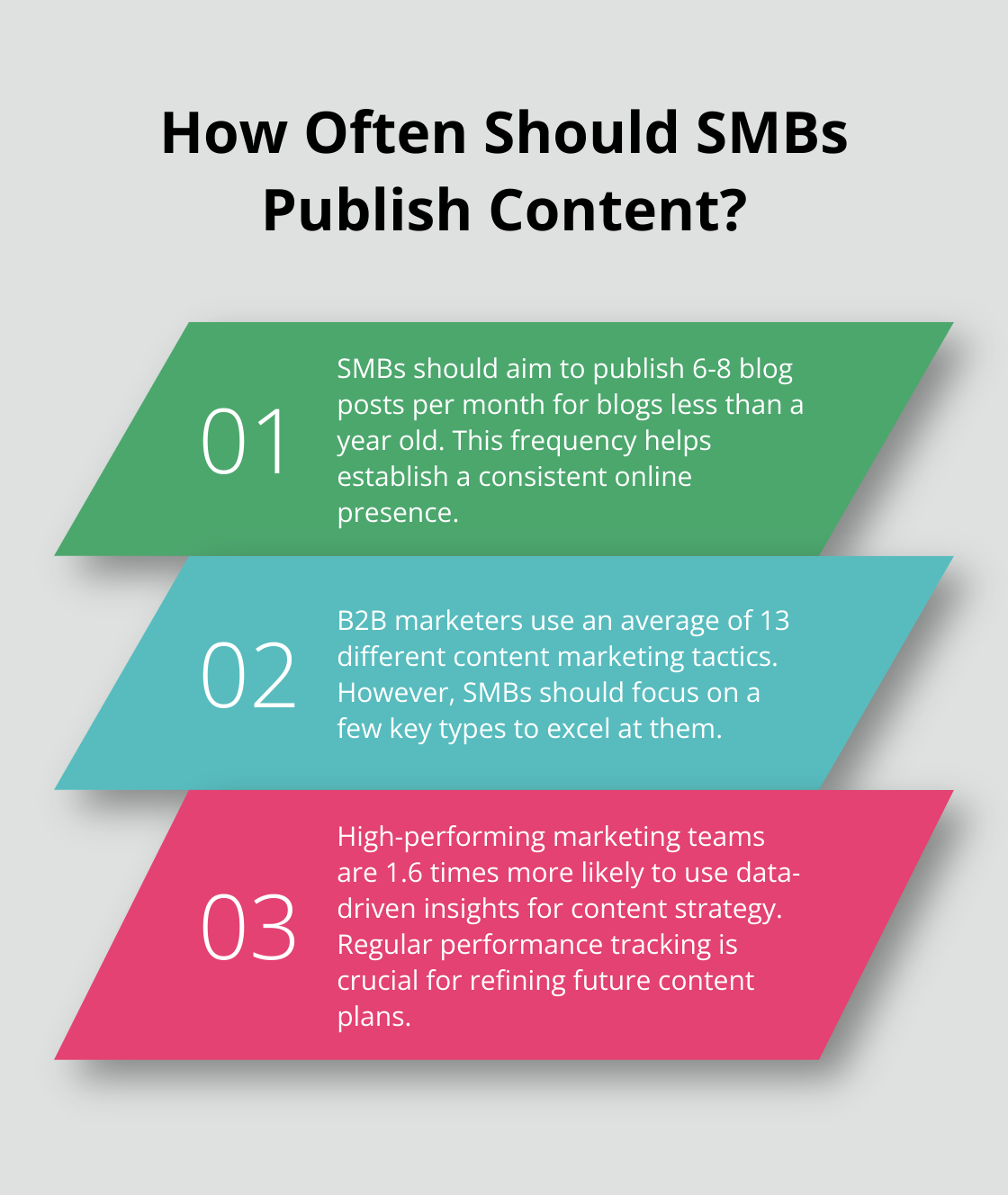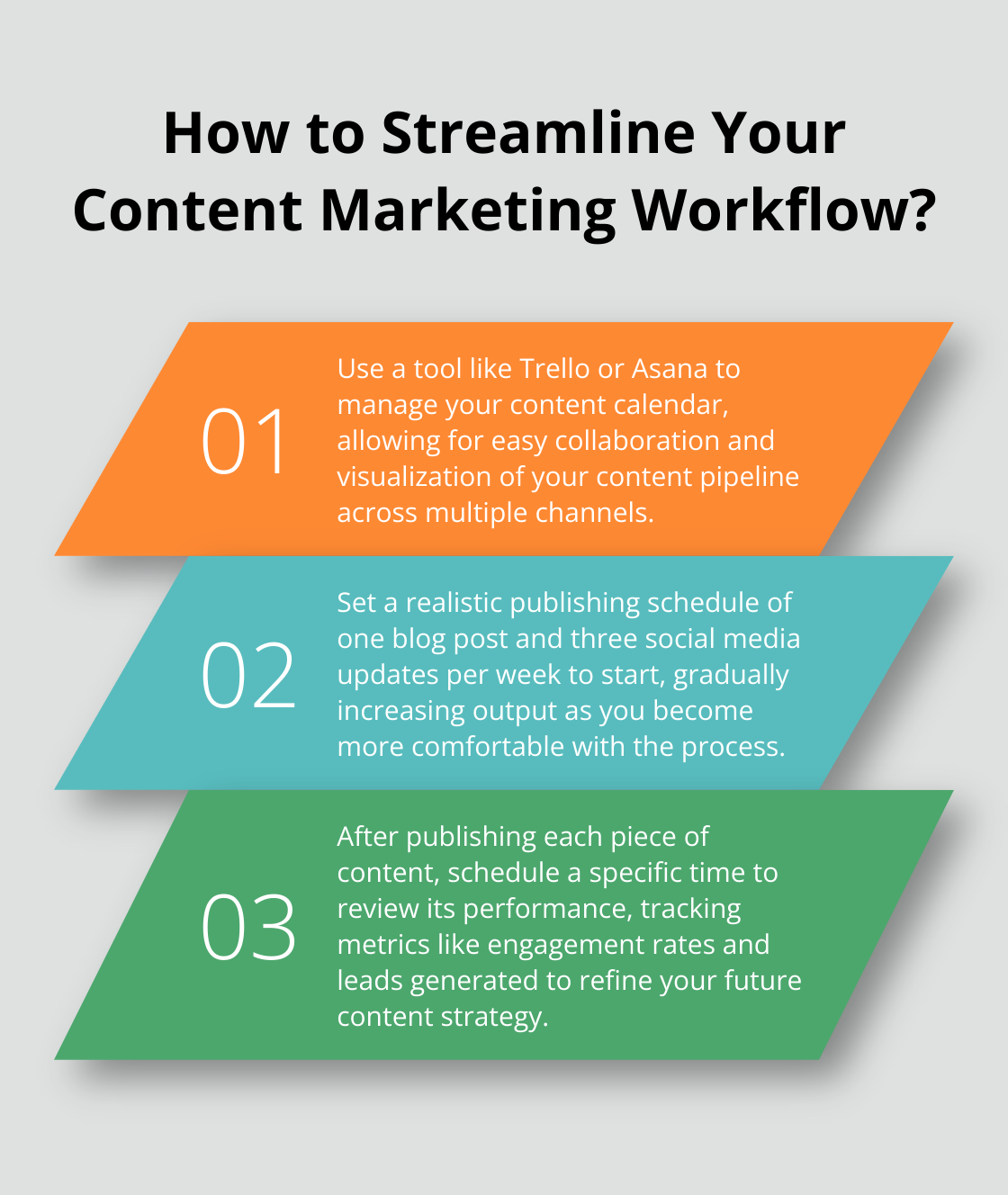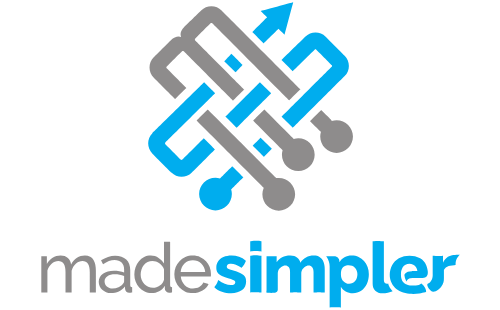Small businesses often struggle with consistent content creation. A content calendar can be a game-changer for SMBs looking to boost their online presence.
At Made Simpler, we’ve seen firsthand how a well-planned content calendar can transform a company’s marketing efforts. This post will explore why a strategic approach to content scheduling is essential for small and medium-sized businesses.
What is a Content Calendar?
Defining the Content Calendar
A content calendar is a framework used to effectively manage your content marketing program. You can use it to plan every stage of the content creation and distribution process, helping you organize and schedule your efforts across various platforms.
Key Components of an Effective Calendar
An effective content calendar includes several essential elements:
- Topics and publication dates
- Content types (e.g., blog posts, social media updates, email newsletters)
- Target keywords
- Team member assignments
- Deadlines for each piece of content

One often overlooked aspect is the inclusion of important dates and events relevant to your industry. For example, an e-commerce business should highlight major shopping events like Black Friday or Cyber Monday. This foresight allows you to create timely, relevant content that resonates with your audience.
Tailoring Your Calendar to Your Needs
Content calendars come in various forms, and the best type for your SMB depends on your specific needs and resources. Some businesses prefer simple spreadsheets, while others opt for more sophisticated project management tools.
A small local bakery might use a basic Google Calendar to plan social media posts showcasing daily specials. On the other hand, a tech startup might leverage a tool like Trello or Asana to manage a complex content strategy across multiple channels.
Integrating Your Calendar with Marketing Strategy
Integrating your content calendar with your overall marketing strategy yields the best results. This integration helps the team see the bigger picture and can boost adherence to deadlines, ensuring that your content aligns with your business goals and marketing campaigns.
Tracking Performance Metrics
A well-structured content calendar should also include space for performance metrics. This allows you to track the success of your content over time and make data-driven decisions about future content.
You might note the engagement rate of each social media post or the number of leads generated from a particular blog article. These insights can help you refine your content strategy, focusing on what works best for your audience.
A content calendar is not a static document. It should be flexible enough to accommodate changes in your business environment or unexpected opportunities. The key is to strike a balance between planning ahead and remaining agile in your content approach.
Now that we’ve explored what a content calendar is and its key components, let’s examine the specific benefits it offers to small and medium-sized businesses.
How a Content Calendar Benefits SMBs
Increased Productivity and Efficiency
A content calendar transforms the productivity of small and medium-sized businesses (SMBs). It eliminates the last-minute rush to create posts or articles, allowing for more thoughtful, researched content that resonates with the target audience.

A study by CoSchedule revealed that marketers who proactively plan projects and campaigns are 356% more likely to report success. This statistic highlights the importance of strategic planning in content creation.
Enhanced Content Quality and Relevance
Content calendars enable SMBs to align their content with important dates, events, and trends in their industry. This foresight allows businesses to create timely, relevant content that captures audience attention.
An e-commerce business, for example, can plan content around major shopping events (like Black Friday or Cyber Monday) months in advance. This preparation time results in high-quality, targeted content that significantly boosts engagement and sales during these crucial periods.
Optimized Resource Allocation
A well-maintained content calendar helps SMBs allocate their resources more effectively. With a clear overview of upcoming content needs, businesses can distribute tasks among team members based on their strengths and availability.
This strategic allocation leads to significant time savings. A report by Workfront found that employees spend only 40% of their workweek on primary job duties due to poor task management. A content calendar can reclaim much of this lost time by providing clear direction and deadlines.
Improved Brand Consistency
Content calendars foster brand consistency across all platforms. They ensure that the tone, style, and messaging remain uniform, which is essential for building brand recognition and trust.
Consistent branding across all channels can increase revenue by up to 33%, according to a study by Lucidpress. A content calendar helps maintain this consistency by providing a centralized plan for all content creation efforts.
Better Performance Tracking
With a content calendar, SMBs can easily track the performance of their content over time. This tracking allows businesses to identify trends, understand what resonates with their audience, and make data-driven decisions for future content.
The insights gained from performance tracking can lead to continuous improvement in content strategy. This improvement cycle is crucial for SMBs to stay competitive in today’s fast-paced digital landscape.
As we’ve seen, a content calendar offers numerous benefits to SMBs. But how can businesses implement this powerful tool effectively? In the next section, we’ll explore the practical steps to create and maintain a successful content calendar.
How to Build Your SMB Content Calendar
Choose the Right Tool
Select a tool that fits your needs. Spreadsheets like Google Sheets or Excel work well for many SMBs, while project management tools offer more features. Trello, Asana, or CoSchedule allow for easy collaboration and visualization of your content pipeline.

A local bakery might find a simple Google Calendar sufficient for planning social media posts about daily specials. A tech startup might benefit from Trello’s board system to manage a complex content strategy across multiple channels.
Plan Your Content Types
Decide on the types of content you’ll create. This could include blog posts, social media updates, email newsletters, or videos. Each content type should have its place in your calendar.
The Content Marketing Institute found that B2B marketers use an average of 13 different content marketing tactics. For SMBs, it’s often more effective to focus on a few key types and excel at them.
Set a Realistic Publishing Schedule
Determine how often you can realistically publish content. Consistency is key, but never sacrifice quality for quantity. If your blog isn’t at least a year old, you should aim to publish 6-8 posts a month around a few important and promising topics.
If you’re just starting, try a manageable frequency – perhaps one blog post and three social media updates per week. As you become more comfortable with the process, you can gradually increase your output.
Align with Business Goals
Your content calendar should reflect your overall business objectives. If you plan to launch a new product in three months, your calendar should include content that builds anticipation for this launch.
Businesses achieve remarkable results when their content aligns closely with their goals. When small and medium-sized businesses (SMBs) deploy content marketing, they unlock a realm of opportunities to connect with customers unlike ever before.
Include Performance Tracking
Build performance tracking into your calendar. After each piece of content is published, schedule a time to review its performance (a week later for social media posts or a month later for blog articles).
Track metrics like engagement rates, click-throughs, or leads generated. Use these insights to refine your future content strategy. A report by Salesforce states that high-performing marketing teams are 1.6 times more likely to use data-driven insights to guide their content strategy.
Your content calendar should be flexible enough to accommodate changes in your business environment or unexpected opportunities. The key is to strike a balance between planning ahead and remaining agile in your content approach.
Final Thoughts
A content calendar transforms how SMBs approach their marketing efforts. This strategic asset achieves consistency, improves content quality, and optimizes resource allocation. The systematic approach leads to enhanced brand awareness, better audience engagement, and improved business results.

Successful implementation requires the right tools, diverse content types, and realistic publishing schedules. SMBs must align their content strategy with overarching business goals. Regular performance tracking (and refinement) ensures the approach evolves with changing business needs.
SMBs can elevate their marketing game by starting with a content calendar. It provides a clear roadmap for content efforts, ensuring every piece contributes to overall marketing objectives. At Made Simpler, we’ve observed how a strategic content calendar can positively impact a company’s online presence. Start crafting your content calendar today to bring structure and focus to your marketing endeavors.

